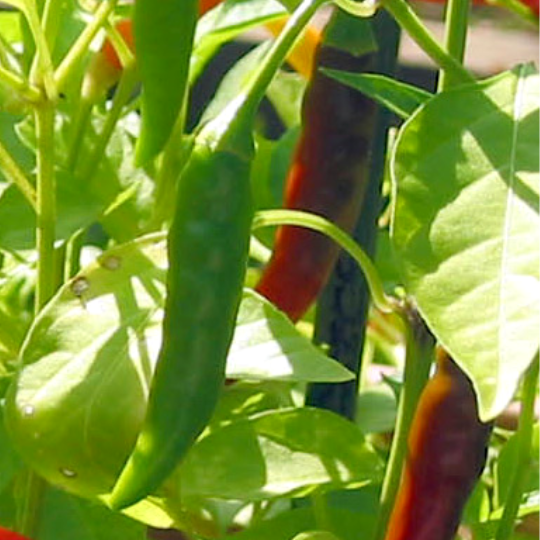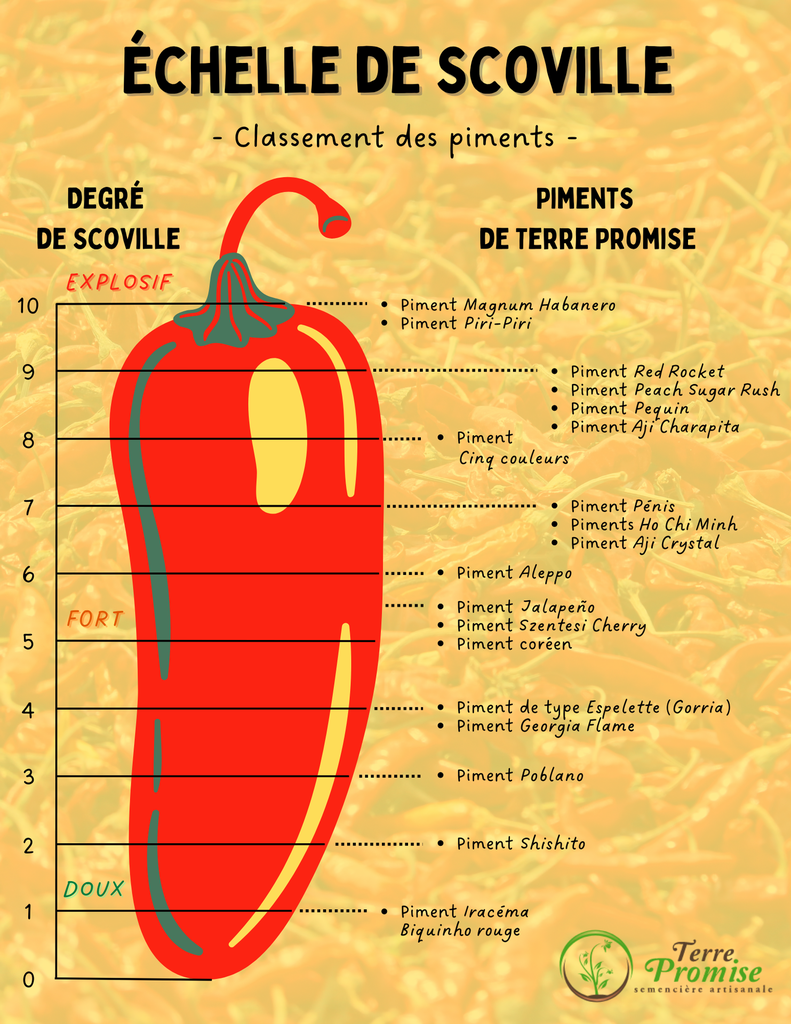Piri-Piri pepper (Capsicum frutescens)
The Piri-Piri pepper, also called bird pepper, was discovered by the Spanish conquistadors in Central America, and in fact, soon spread all over the world. Today this pepper is widely used in the Democratic Republic of Congo, Portugal, Brazil and Angola as piri-piri. The term pili-pili refers to hot pepper in Bantu languages, including Lingala in Congo and many other sub-Saharan languages. Fruits of very small size, erected, thin and pointed, it is a very pungent variety. Harvest as soon as it is bright red. It is eaten either fresh or dried.
MAINTENANCE AND OTHER CONSIDERATIONS
Does not tolerate cold.
| Quantity: Envelope of about 20 seeds |
| Plant type: Annual |
| Family: Solanaceae |
| Color: Red |
| Plantation: In the garden after the risk of frost |
| Sowing: Inside |
| Row spacing: 60 cm |
| Days to maturity: 110 to 120 days |
| Germination: 15 to 20 days |
| Plant spacing: 40 cm |
| Depth: 5 mm |
| Exposure: Full sun |
| Soil: Well drained |
| Shape: Bushy |
| Width: 20 cm to 30 cm |
| Height: 40 cm to 60 cm |




![[154] Aji Charapita Pepper (Capsicum chinense)](/web/image/product.product/798/image_128/%5B154%5D%20Aji%20Charapita%20Pepper%20%28Capsicum%20chinense%29?unique=7d62223)
![[164] Magnum Habanero Pepper (Capsicum chinense)](/web/image/product.product/799/image_128/%5B164%5D%20Magnum%20Habanero%20Pepper%20%28Capsicum%20chinense%29?unique=afca737)
![[166] Pepper Peach Sugar Rush (Capsicum baccatum)](/web/image/product.product/801/image_128/%5B166%5D%20Pepper%20Peach%20Sugar%20Rush%20%28Capsicum%20baccatum%29?unique=afca737)
![[167] Pepper Penis (Capsicum anuum)](/web/image/product.product/672/image_128/%5B167%5D%20Pepper%20Penis%20%28Capsicum%20anuum%29?unique=afca737)
![[171] Red Rocket Pepper (Capsicum annuum)](/web/image/product.product/771/image_128/%5B171%5D%20Red%20Rocket%20Pepper%20%28Capsicum%20annuum%29?unique=afca737)